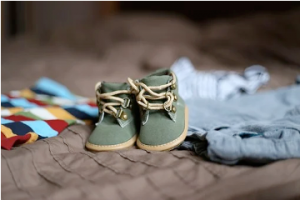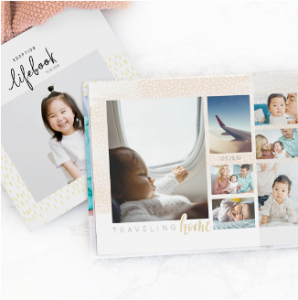Helping Autistic Children with a New Baby
Another blog by Sarah Loveridge, one of our specialist teachers.
Change can be scary, especially a big change like a new baby joining the family and ESPECIALLY if you’re autistic. Thankfully, we often have around 9 months to get ready for this change, and autistic children will need as much of this time as possible to prepare for this big transition particularly if they’re currently an only child.
Why is transition hard for autistic children?
Transition is particularly challenging for some autistic children because unpredictability is the enemy. They may do all they can to control situations, because the more they can control, the safer they feel. Transitions can be so distressing for the autistic child and we might only see it in changes to their behaviour because that is the only way they communicate this.
As a result, transition requires a lot more energy (see blog post on spoon theory) as they try and process all the new information coming at them. Here are some reasons why transitions can be difficult:
- Not being told what the change will involve
- Now knowing what will be expected of them
- Not knowing how long it’s going to last
- Perceived or real sensory challenges
- Not being given enough time or information to process the changes
- Being so engrossed or comfortable in what they are doing that they cannot seem to switch attention and move/do something else.
How can I help a smooth transition?

Validate their feelings.
However excited we are to introduce a new child into our family, we will all have moments of panic, fear, doubt, worry and confusion too. Sometimes as adults we feel like we should hide these emotions from our children and pretend everything’s fine in order to keep stability and help them feel safe. More often than not, this makes children more anxious as they pick up on our emotions and see us trying to hide them. If, instead, we talk about our emotions and how we’re dealing with them, this allows our children to validate their own turbulent emotions whilst also modelling effective regulation strategies.
Example: “I’m having a moment of panic about baby clothes – we don’t have enough and I have no idea what to buy…but I can’t let Billy see that so I’ll put a smile on my face and worry about it later when he’s gone to bed.”
Alternative example: “Billy, let me explain why I seem a bit flustered and short tempered today; I’m having a moment of panic about baby clothes – we don’t have enough and I have no idea what to buy…I’m going to have to change our routine slightly and use an hour to sit down and make a plan about baby clothes as that will help me feel calmer. Would you like to help me?”
In that alternative example we’ve taught Billy that adults feel uncomfortable emotions too; we’ve validated his uncomfortable emotions by showing that it’s okay to feel and talk about them; and we’ve given him an insight into one of the many strategies we employ as adults all the time just to get through the day.

Help them be a part of the process.
The change is coming and there’s nothing they can do about that. But by letting them be part of the planning process, they are able to control little bits about the transition which helps reduce some of the anxiety. Have a think, what could they help you with?
- Choosing baby clothes
- Choosing colours/decorations for the baby’s room
- Choosing a name
- Buying supplies (eg nappies, baby food)
- Packing your hospital bag
- Making a plan for when you’re away
- Choosing toys
Note: a lot of baby toys are very pleasing sensory-wise – they might be very soft or have a satisfying crinkle. By choosing baby toys with your child, you’re immediately getting rid of any options that might lead to sensory overwhelm/overload eg toys with annoying high-pitched tunes or toys that have an unwanted smell. This also gives you chance to talk through sharing – could you make a box for baby and a box for your other child which has the same toys in so they can both enjoy playing with them at the same time? This encourages your child to play with the new baby without also having to deal with the difficult social skills of sharing, waiting or taking turns.
By letting them be a part of the process we’re helping them work through some of their emotions, giving them a small sense of control and preparing as a family for this big transition.

Identify potential sensory difficulties
We can all think of some of the hardships of a new baby being around – interrupted sleep, noisy screaming/crying, smelly nappies – but for autistic children these sensory challenges can be incredibly overwhelming, especially if they’re not prepared for them. Don’t panic immediately – some children are able to develop tolerance to certain smells and noises but this takes time. Can you turn it into “the baby game” where you practise listening to a crying baby or smelling something similar to a nappy for a few minutes each day to get ready for it? Can you visit a friend or family member who has a baby for a short period of time to start to build some tolerance?
If this is really going to be a problem, it’s also worth thinking carefully about how you can give your autistic child some respite from the sensory challenges of having a new baby in the house. It might be worth creating a quiet baby-free place in your house where they can have their own safe place to go if it gets too much for them.
We worked with an older child whose parents were expecting a new baby. He was very distressed because he was so noise sensitive that the prospect of a baby’s crying hurting his ears was terrifying for him. Writing him a little story about how a family grows, with reassurances that he could go to a quiet place that was just for him when the baby cried, was so helpful. In the end he loved helping care for his little sister, and many years later, the two are good still very friends.
Ensure you’re taking time to chat with your child about what you will find difficult and talk through what strategies you’re putting in place to cope. It might be helpful to put a set time in the diary each week to talk about “baby worries” and “baby affirmations” or maybe you want to use a 10min timer each day to chat through a question they may have in order to regularly talk through challenges and solutions together.
Sensory ideas:
- Ear defenders
- Nice smelling things
- Hand sanitiser/wipes (for using after touching a sticky baby!)

4. Use resources
This is particularly helpful if your child is very young and you’ve read through the blog so far thinking “I’m not able to have all of those in-depth discussions with my child – help!” Even very young or pre-verbal children will be able to indicate which toys they like or which smells are difficult so please do try and implement some of the things above, alongside using some of these child-friendly resources to develop understanding.
Discussion around timescales can be helpful, especially relating to one of the reasons mentioned at the beginning about not knowing how long it will last. There are some helpful guides out there which track changes and can give some idea of what milestones babies might hit. Caution: obviously we know that not all babies develop at the same rate and this needs to be clearly explained to your autistic child. We can use these guides as an idea or best guess about when each phase might start/end but it’s best to view this as a science experiment rather than hard fact. See it as a “can we test this book to see if it’s right?” rather than “this book will be right and the baby might be wrong”.
It can also be very therapeutic to go through baby photos with your child of when they were born. Maybe stick some of them on paper to make a life timeline. You could do this with photos of you as their parents if you have enough photos. This can help them to understand that a new baby joining the family is a natural process and is a very good thing! It may also be helpful to help them understand the growing process (that the baby will grow into a toddler, child etc). Use photos and magazine pictures to show how we grow and change and explain that this will happen to baby too.
Be honest with them and feel able to say things like: “yes this change can be uncomfortable, yes our routines will be disrupted, yes it will be difficult for all of us at times BUT we love having you! You’ve brought us so much joy and we’re so glad you’re in our family – so let’s try and welcome new baby/child in the same way”.
Social stories can be really helpful when explaining how your autistic child could react in certain situations but BEWARE! Some examples that you find online are too presumptuous (eg “I will love my baby sister!”) and some can even lead to vulnerability as they teach your child to “do this to please ___”. For more information on how to write effective social stories, why not check out one of our Social Story training courses: https://reachoutasc.com/training/
Finally, a note on adoption
It’s worth mentioning that for some families, you’ll have a slightly different experience of this transition as you go through the adoption process. Again, preparation time and child involvement is key. The tricky thing with adoption is that sometimes it falls through. Whilst it is a natural instinct to want to protect your autistic child from this heartache (which can sometimes happen again and again) it is also worth remembering that a lot of autistic children over-empathise so they’ll be feeling your emotions anyway. If this is the case then talking about it will be helpful in developing their understanding of why you’re feeling that way and will stop them worrying about whether it’s something they’ve done to cause your distress.
One of the (many!) good things about adoption is that you often get some information about the child before you bring them home so you can show your child pictures, get them used to the name and maybe even meet them a couple of times before they join your family. This can be a really positive way of preparing them for the transition to sibling-hood! . This is a great website – https://homeforgood.org.uk/preparing-birth-children
To sum up…
As with all things for autistic children, it’s never one-size-fits-all. What works for some children in this transition won’t work for others. If you can identify worries or triggers early on, then that gives you a really good starting point for finding some solutions and hopefully some of these ideas will help. The key is always to prepare as early as possible and try and get the child involved as much as possible. And congratulations on your new addition!
